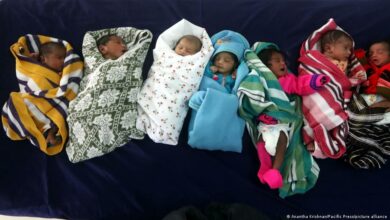
The first child with DNA from three parents was born in New York last spring. The birth was the result of a procedure by an American medical team, performed in Mexico, as it banned in the US.
Despite happening in the spring of this year, the birth was kept under wraps until it was reported in New Scientist last week. Experts were amazed by the birth and view it as a revolutionary change in the way that fertility studies are viewed and conducted.
The child’s parents are Jordanian and actively sought out the procedure as a solution for medical complications the mother had experienced during previous pregnancies, whereby she suffered four miscarriages.
The mother’s DNA carries a dominant gene that causes Leigh disease, a neurological disorder characterized by progressive loss of mental powers and motor functions. It usually makes itself apparent in the first year of a child’s life. The mother has also endured two of her children dying from the disease, one at eight months and the other at six years.
The syndrome affects a quarter of the mother’s mitochondria, which are organelles abundant within any cell, responsible for providing energy to cells. The DNA from the donor egg was stripped of any genetic material so it didn’t affect the baby’s genes at all, making doctors wary of calling the child a “the-parent baby” — a term that they deem problematic because in effect, the baby's genetic material is only made up of genes from two people.
The procedure was performed by acquiring a third donor’s egg, which was spliced together with the mother’s egg, the hybrid egg then being fertilized by the father’s sperm. After the procedure, the baby’s chances of contracting the disease were reduced to about 1 percent.
“This is huge,” said Dr. Richard J. Paulson, president-elect of the American Society for Reproductive Medicine, to the New York Times.
The procedure is banned in the US, so American doctor John Zhang, from New Hope Fertility Clinic, went to Mexico to finish the procedure. He was quoted saying he chose Mexico because, “There are no rules.”
While doctors are looking at this as an undeniable breakthrough, critics of the procedure are seeing it as the first step down the slippery slope that is genetic engineering.
“To save lives is the ethical thing to do,” Zhang said to Jessica Hamzelou of New Scientist.
The donor has no claim to the child, so in this regard the child has only two parents. Scientists hope that the success in this case can start changing attitudes towards procedures such as mitochondrial transfers, which they believe can be of assistance of many people.




